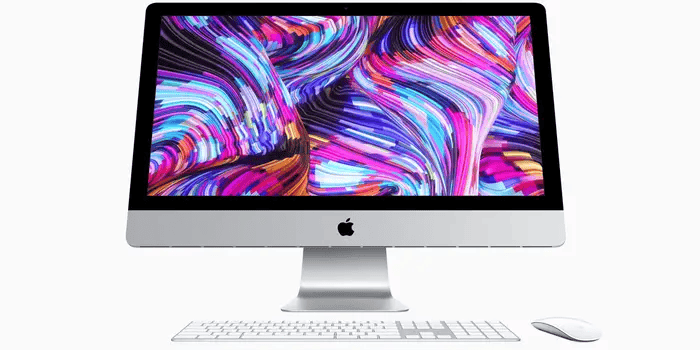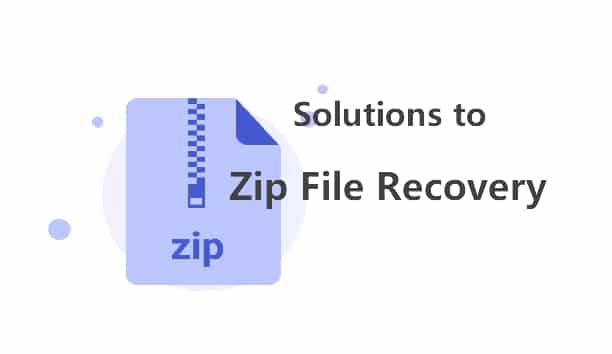In this guide, our focus is on salvaging a corrupted hard drive without resorting to formatting, enabling you to retain your valuable data. Often, data loss due to a corrupted hard drive can be a distressing experience. However, with prompt action, it’s feasible to recover files and restore functionality to your hard drive without formatting. The methods outlined here cater to various data loss scenarios caused by hard drive corruption on Windows 10/11, ensuring you have options to retrieve your data without compromising your entire drive.
Symptoms of Hard Drive Corruption
Hard drive corruption can show up in several ways, giving clues that something might be wrong with your storage. Some common signs of hard drive corruption include:
| Symptoms | Description |
| ⚠️ Frequent Crashes or Freezing | Does your computer freeze a lot or suddenly crash for no apparent reason? That could be a sign of a problem with your hard drive. |
| ⚠️ File Access Problems | Having trouble opening files or getting error messages when trying to access them might indicate hard drive issues. |
| 🐌 Slow Performance | If your computer becomes slower, especially when working with files, your hard drive could be the cause. |
| 💥 Blue screen of death (BSoD) | If the system has a blue screen, the computer cannot boot up and may prompt the following error codes: 0X00000077, 0X0000007A, and 0X0000007B. All three types of codes indicate that bad sectors, firmware damage, head damage, or other failures physically damage the hard drive. |
| 💥 Unusual Sounds | Weird noises like grinding or clicking coming from your computer might suggest a problem with the hard drive. |
| ❓ Disappearing Files or Folders | Files or folders disappearing without you doing anything could signal hard drive trouble. |
| ⛔ Fail to Access or Write Data | Almost all the reasons mentioned above may cause the hard drive not to be accessed and data reading and writing problems. In most occasions, the hard disk drive becomes a RAW partition. |
| ⛔ System Errors | Getting error messages, especially when starting your computer or while working on files, might mean hard drive issues. |
| ⚠️ S.M.A.R.T. Warnings | Certain tools might give warnings about your hard drive’s health, indicating potential problems. |
| ⛔ Boot Problems | If your computer crashes often when starting up or can’t start at all, it might be due to hard drive issues. |
Reasons for hard drives corrupted
Hard drive damage is generally categorized into physical damage and logical damage.
Physical damage:
- Damage to the magnetic head assembly
- Control circuit damage
- Sector physical damage
- Port problems (bad connections, bad interfaces)
- Dropped, water ingress, etc.
Logic corruption:
- System error
- Sector logic errors (bad sectors)
- Unplugging an external hard drive from the computer without a security ejection
- Virus damage or malware infection
- File system errors
- Outdated/corrupted drivers
- Power Failure
- Drive letter conflicts with the system
What to Do If Experiencing a Hard Drive Corruption?
Experiencing hard drive corruption can be alarming, but here are steps you can take swiftly to avoid further corruption:
● Stop Using the Drive: Immediately stop accessing or using the corrupted drive to prevent further damage or data loss. Continued use could worsen the corruption or overwrite existing data, making recovery more challenging.
● Diagnose the Issue: Use built-in Windows tools like CHKDSK (Check Disk) to scan and identify errors on the drive.
● Avoid DIY Repairs: Refrain from attempting drastic measures like formatting or using unreliable software without proper guidance, as they might cause more harm and worsen the situation.
● Data Recovery: Use reputable data recovery software designed for hard drive issues. These tools can often help retrieve lost or inaccessible files from the corrupted drive.
How to recover files from a corrupted hard drive
Option 1: Using Professional Data Recovery Software
No matter the causes of hard drive failure, we recommend using professional file recovery software as soon as possible to retrieve important data. ONERECOVERY offers a safe and reliable hard drive recovery solution for most scenarios and a majority of hard drive brands. No matter how you lose your precious data, the software can restore them. Plus, its intuitive interface allows you to use it in just a few steps, and there’s no need for technical skills. Here is a demonstration of the steps in using it.
Step 1: Download, install and run ONERECOVERY on your computer.
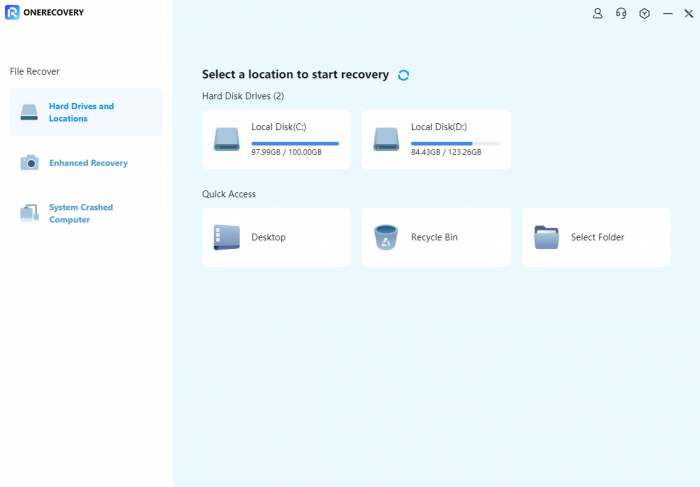
Step 2: Locate the drive and scan it, preview the results and choose the files you want to restore.
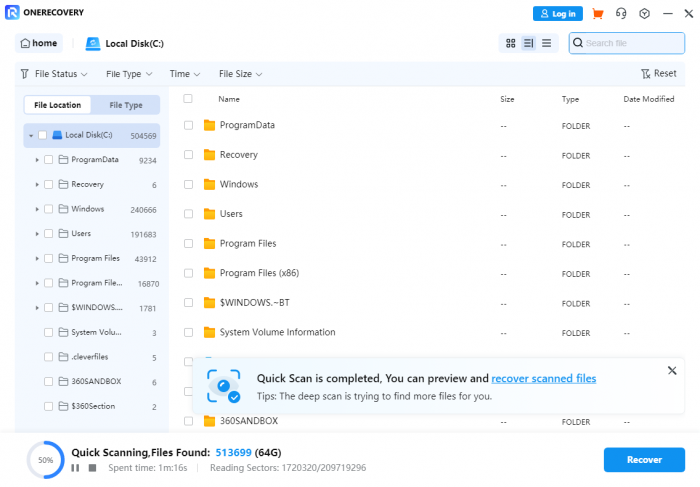
Step 3: Preview the results and choose the files you want to restore.
Step 3: Save the files to a new location.
Option 2. Using Built-in Feature
Restoring data from a corrupted hard drive using built-in features can be done manually with a few steps. Here’s how you can try:
Step 1: Comprehensive Disk Check
● Open Computer/This PC and select your Hard Drive.
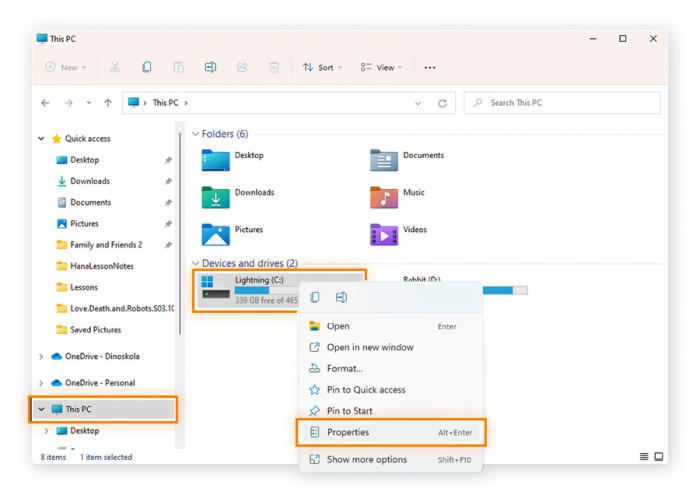
● Choose Properties, go to Tools, and click on Error checking.
● Click on Check Now and select Check local disk. Then, hit Start.

● Shut down all open programs and wait for the system to check the drive on the next boot. Restart your PC afterward.
Step 2: Control Panel Method
● Go to Control Panel, then System and Security, and click on Action Center.
● Expand the Maintenance section and select Run Scan. Restart your computer after running the scan.
Step 3: Using File Manager
● Open File Manager and select the problematic Drive.
● Go to Properties, click on Tools, and choose Error Checking.
● Once the drive errors are found, click Repair This Drive.
Remember, these methods require some technical know-how and might not work for all cases of hard drive corruption. They also come with risks like data loss and integrity issues. Hence, we still suggest using data recovery software, especially for computer beginners. For more complex issues, seeking professional assistance is recommended to avoid compromising your data.
How to repair a corrupted hard drive without formatting
Here are ways to repair corrupted hard drives:
Check the connection
If you are using an external hard drive, first, you should check for hardware problems, such as connection issues. Therefore, we recommend that you check for the following matters before trying anything else:
Verify the USB cable’s integrity
Look for wear on the USB cord connecting the external drive to your computer. Replace the cable with a new one if it appears to be damaged.
Change to a different USB port on your computer
Sometimes, a damaged port on the machine can prevent the external drive from being detected. Please switch to another USB port on your computer.
Connect to another functional computer
In case your computer is experiencing system issues that prevent it from working correctly. Therefore, we advise attaching the external drive to a different laptop or computer.
Scan for viruses
You can download antivirus software to check for viruses and ransomware. Here are some of the better-known manufacturers of virus software. You can refer to it.
Use CHKDSK
CHKDSK is a Windows application that scans and repairs system problems. It also examines hard disk drive components for damage.
Step 1: Type cmd in the search bar on the start menu > click Run as administrator.
Step 2: Type “CHKDSK /f/r/D” > click the “Enter” key (change D into your drive letter.)
✅ Tips:
The chkdsk /r: r means to repair. The command thoroughly checks the disk drive to correct errors and find recovery information in the bad sectors.
The chkdsk /f: f means to fix. The command is used to fix the file system on the disk drive so that you can find the file.
The chkdsk / x: x means unmounting the hard disk before the process starts.
The chkdsk / b: b means to Clear any problematic clusters from the drive and perform a fresh error check on all allocated and free groups (NTFS file systems only).
Add some of the options above to the program for a more thorough scan. For instance, the command line for a G drive in this scenario would be: chkdsk G: /F /R /X
Update Disk Drivers
Your computer’s drivers must most likely be updated if your external hard drive can be successfully utilized on another computer. As we know, drivers are software that provides efficient hardware and software communication. These drivers are updated by hardware manufacturers, and Windows upgrades may corrupt them. So, you need to upgrade your computer’s disk drive.
Step 1: Right-click on the Win icon on the start menu > click Device Manager.
Step 2: Expand the Disk Drive selection and Universal Serial Bus Controller > Find Damaged Hard Disk Drives (Hardware devices with outdated driver software or damaged hardware will be marked with a yellow exclamation point.)
Step 3: Click Search automatically for updated driver software
The official website of the hard disk manufacturer also offers a manual driver download option. Simply enter “hard disk brand driver” into Google and select the top result. Download the driver’s.exe file and install it like any other application.
Perform Disk Error Checking
Chkdsk is an internal utility that, as mentioned above, can fix broken internal and external hard disks. Windows often prompts the user to automatically check an error when a malfunctioning hard drive is connected to the computer. Here is another tool to check the errored drive. The user can manually run an error scan in a few steps. These are the procedures.
Step 1: Open File Explorer > right-click the drive you want to fix > Click Properties
Step 2: Click Tools on the top bar.
Step 3: Click Check, the program will check your errored drive.
Run the SFC Scan
Hard drive research failures caused by file system corruption can be rescued using this method, which is the System File Checker utility that can be used to fix or repair a damaged hard drive.
Step 1: Type cmd in the search bar in the start menu > right-click Run as administrator.
Step 2: Type DISM.exe /Online /Cleanup-image /Restorehealth
Step 3: Type sfc /scannow
Step 4: The program will check the file system and replace the error in it. Do not quit the program in advance before the whole procedure is completed.
If the hard drive is an external hard drive, please follow this:
Step 5: Type sfc /scannow //offwindir=C:\ /offbootdir=X:\ Windows instead of sfc /scannow.
Step 6: Replace X with your own hard drive letter. When the whole program is done, restart the computer and you can access the drive.
Conclusion
Hopefully, these tips were helpful, and you can use them to repair corrupted Hard Drives. If not, note the hard disk on your computer for any noise. If you hear a clicking or beeping noise, the damage is physical or mechanical, or you cannot get your drive back to normal with the above methods, you should contact a service facility. Don’t forget that recovery software is strongly recommended for use when you lose your files on the hard drive.
Related Articles
How to Retrieve Data from Corrupted Flash Drives?
How Can I Recover My Damaged SD Card Without Formatting?
How to Fix The Blue Screen of Death?
How to Fix A Computer That Can’t Turn on?
I’m thrilled to be part of the OneRecovery team as a writer. I’m passionate about simplifying the complex world of data recovery and making it easy for everyone to understand. My focus? Well, I love diving into tutorials on hard drive recovery, crash computer data retrieval, photo repair, and many more. But that’s not all—I’m all about exploring the creative side too, so expect plenty of engaging and imaginative posts on various aspects of data recovery software. Join me on this journey as I share insights, tips, and tricks that make data recovery a breeze!





